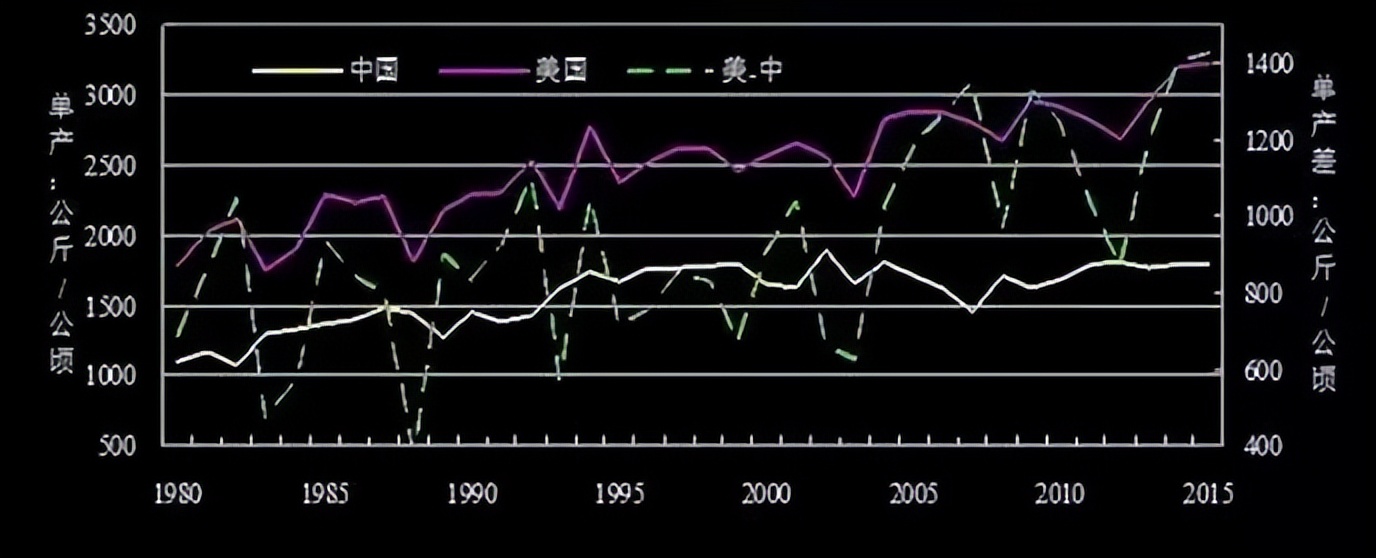The first and third generations of genetically modified soybeans have exploded in yield
"Genetically modified" is probably the most mysterious and controversial agricultural production technique. Even in the United States, the general public and the scientific community still have different views on genetically modified foods. But it was genetically modified technology that propelled U.S. beans to the top of the soybean industry.

The first generation of genetically modified soybeans: Monsanto, in 1993, developed a glyphosate-resistant soybean variety, the birth of the first generation of genetically modified soybeans. Glyphosate-resistant transgenic soybeans have a herbicide-tolerant glyphosate gene and are therefore highly tolerant to glyphosate. Applying glyphosate herbicides in the field will not affect soybean yields. All other weeds are killed by glyphosate. In this way, farmers do not have to use a variety of herbicides as in the past, but only one herbicide of glyphosate can kill all kinds of weeds, and after the weeds are killed, they can become humus, increase the fertility of the soil, and further contribute to the growth of soybeans.
As can be seen from the chart above, soybean yields have risen dramatically since 1993.
Second generation of genetically modified soybeans: In 2010, monsanto, invented the second generation of genetically modified soybean seeds Intacta RR2 PRO, which can not only resist pesticides, but also "insect-free" resistance to a variety of diseases and insect pests, the maximum use of nutrients in growth, so that planters no longer have to use a variety of pesticides, thereby protecting the soil environment, playing a role in "killing two birds with one stone", since then, the United States soybean production ushered in a new round of growth.
Third-generation genetically modified soybeans: In 2018, Monsanto released news that third-generation genetically modified soybeans were on the market. Compared with the previous two generations, the third generation of GM soybeans has made a new breakthrough in the two most important traits of insect resistance and weed resistance: it can tolerate dicamba herbicides and has three anti-insect proteins: Cry1A.105, Cry2Ab2 and Cry1Ac, which will significantly increase the current intacta GM crops' ability to protect against Lepidoptera pests.
Taken together, compared with non-GMO soybeans, genetically modified soybeans are resistant to pests and diseases, drug resistance, herbicides, and drought, thus allowing the yield of genetically modified soybeans to surge.
Second, the U.S. soybean growth cycle
The main soybean producing countries in the northern hemisphere are the United States and China, which are sown in May-June and harvested in September-October; the main soybean producing countries in the southern hemisphere are Brazil and Argentina in South America, which are mainly sown in October-December and harvested in March-May.
(1) Planting period: May-June, hype hot spots: planting area, planting progress.
(2) Flowering period: July, speculation hot spots: planting area, planting progress, excellent production rate.
(3) Grouting period: August to September, speculation hot spots: carry-over inventory, actual inventory, estimated yield, growth rate.
(4) Harvest period: October-November, speculation hot spots: harvest progress, estimated output, actual inventory, growth rate.
Third, the main soybean producing areas in the United States
U.S. soybean-producing regions are predominantly in the Midwest, from Nebraska, Iowa, Illinois, Indiana, to Ohio. There are 18 states in the north, including Dakota, Minnesota, Wisconsin, and Missouri in the south. These states produce 80% of U.S. beans.
Fourth, the United States past soybean production
Fifth, hold the pricing power, the top of the food chain
At present, the global soybean import and export pricing standards are based on the US CBOT soybean price pricing benchmark + liters of premium for quotation, while the us large companies to buy the farmer's soybeans to adopt the seller's point price model, while the export to take the buyer's point price model. Regardless of the model, it is based on the CBOT disk, and it is conceivable that the pricing power in hand is how cloudy and rainy. The soybean crisis experienced by the mainland in 2004 is a classic case of the UNITED States capital jointly strangling the mainland soybean industry and taking the opportunity to control the mainland oil and fat industry, and it is also a prominent embodiment of its advantage in controlling pricing power. Three of the world's four largest grain merchants are American companies. Later, we will write a special article about these.
In summary, although the United States has surpassed the output of Brazil in the past two years, but in the global soybean market, the right to speak is still in the hands of the United States, for the continent as a 100% dependent on imported soybeans and engaged in soybeans and soybean meal trade industry practitioners, to understand the fundamental information of american soybeans is a must to grasp.